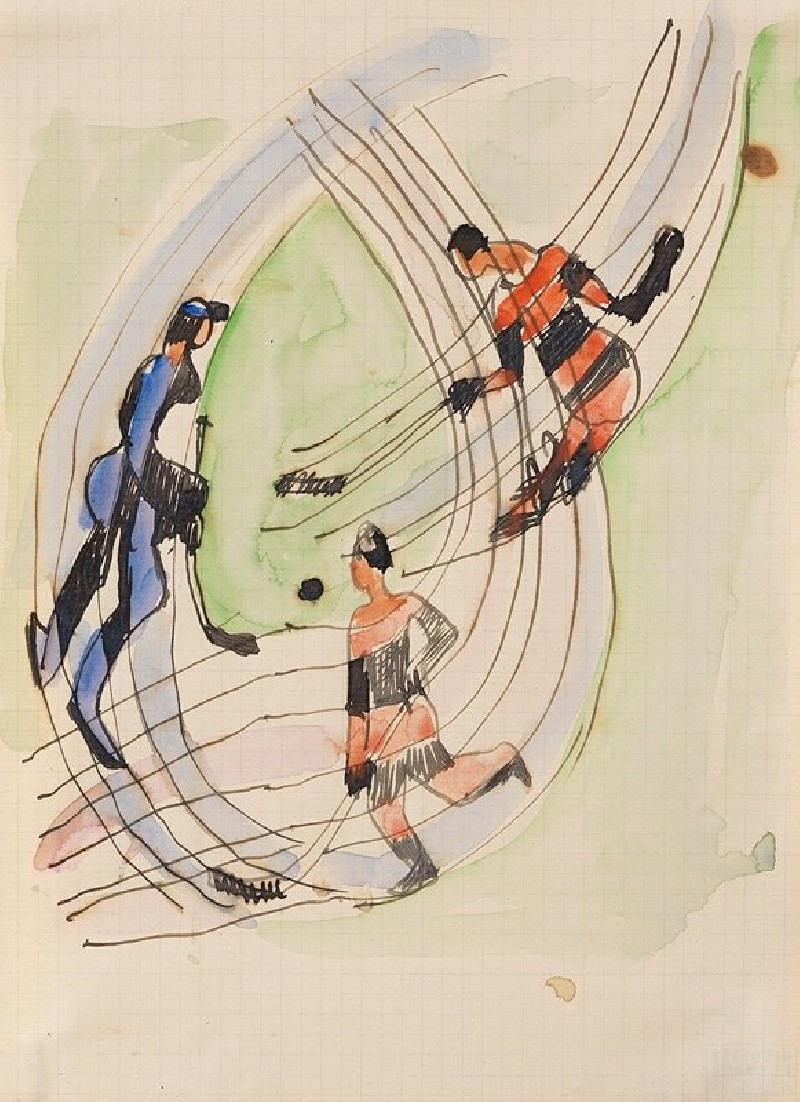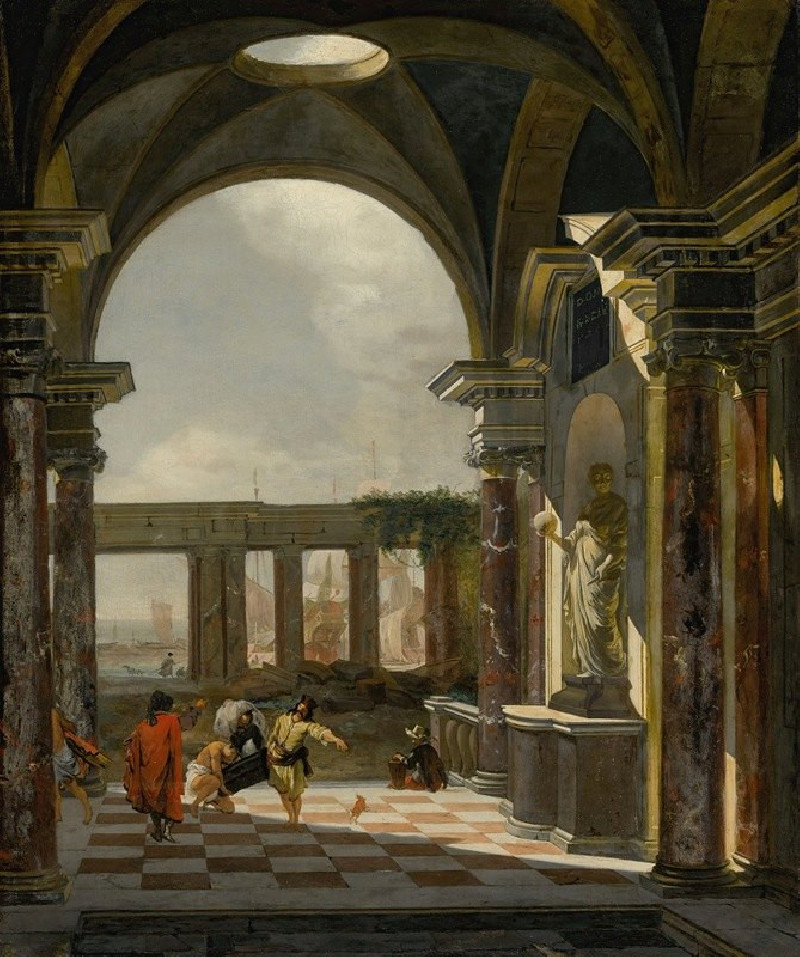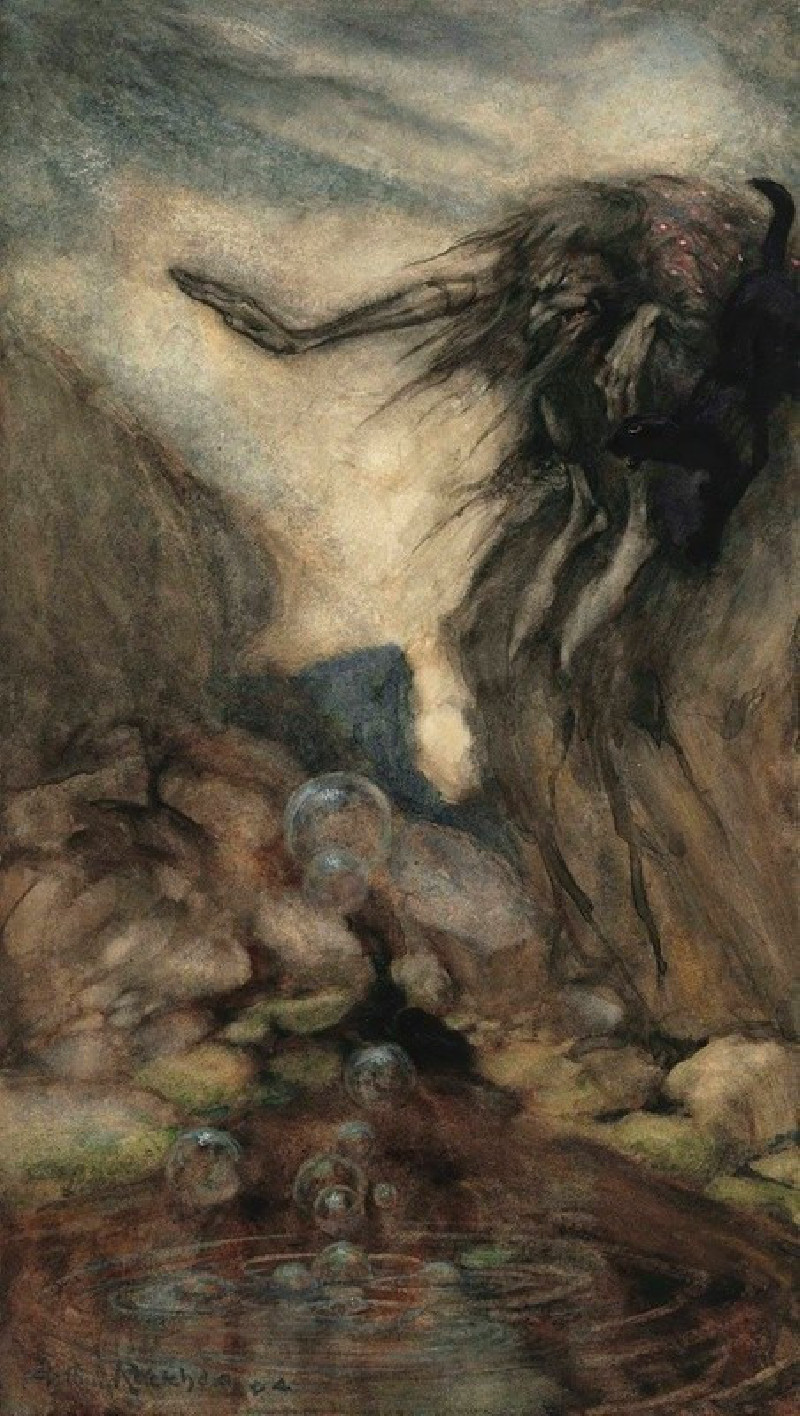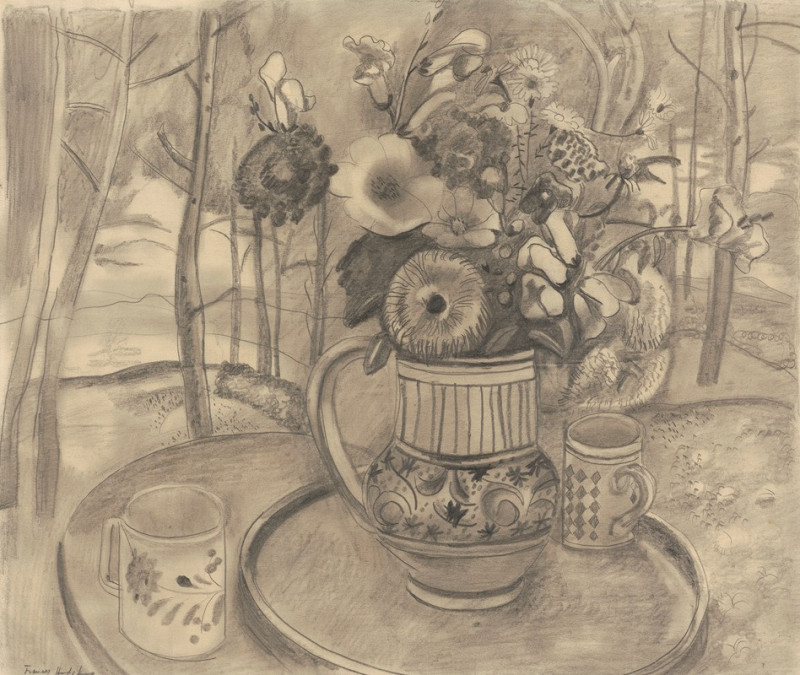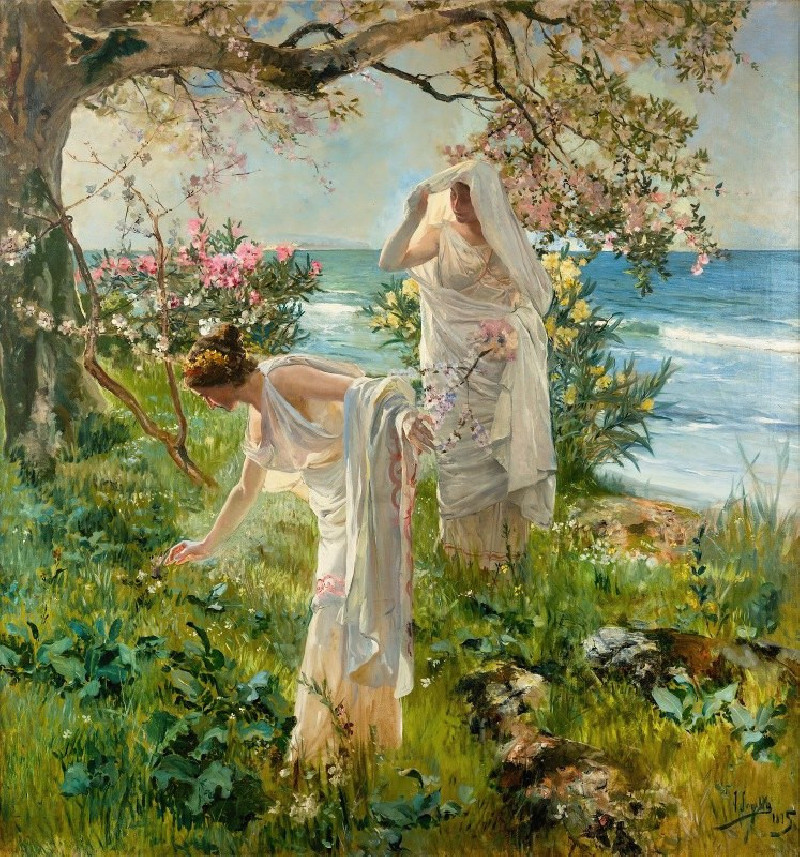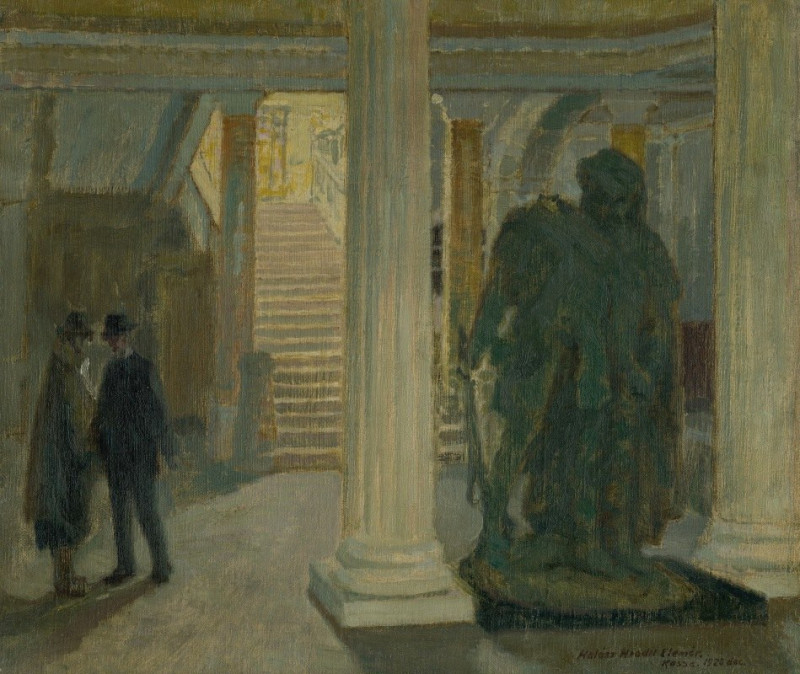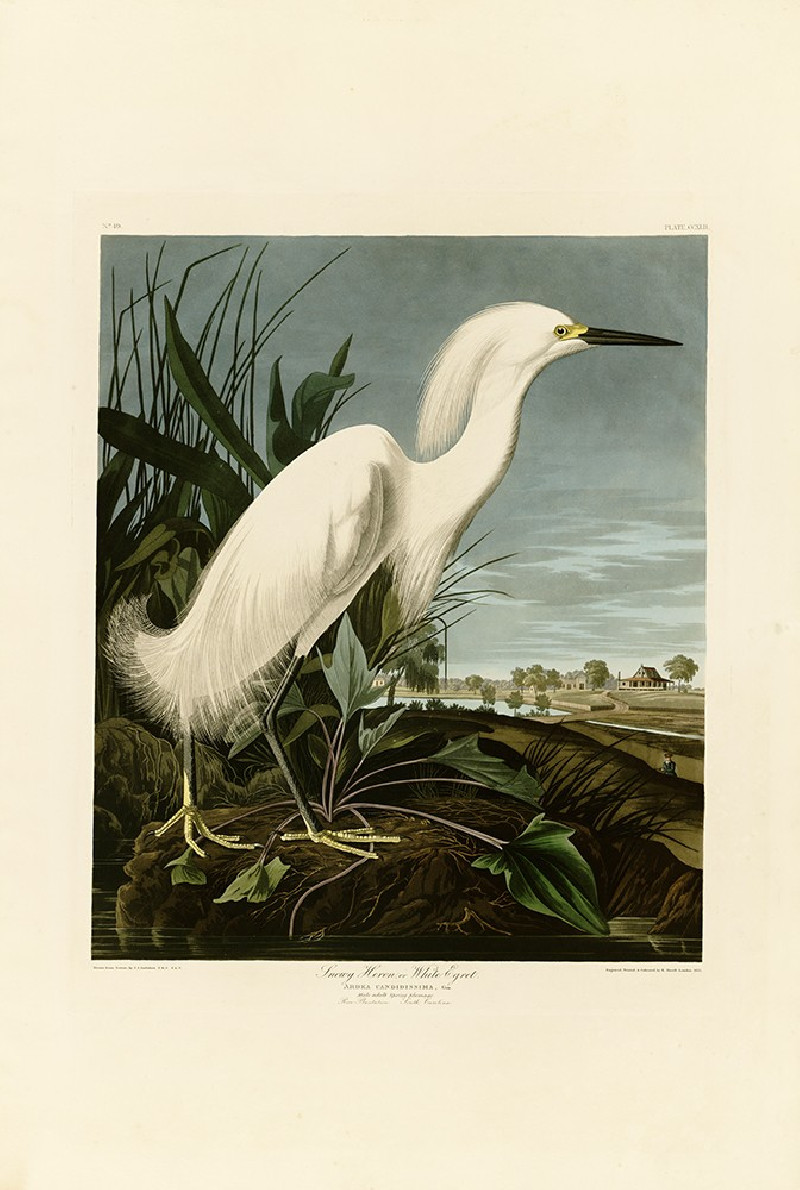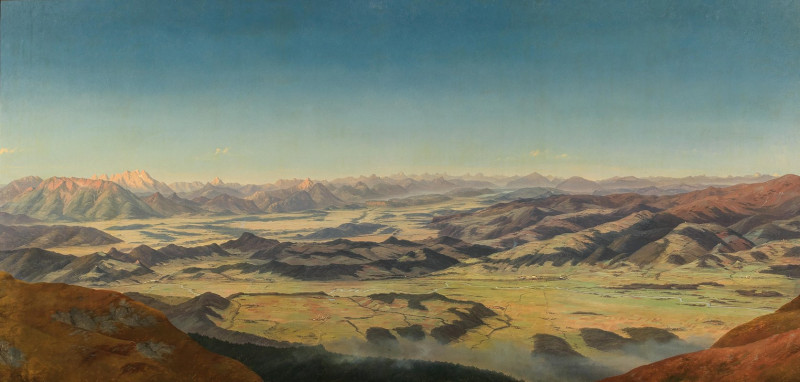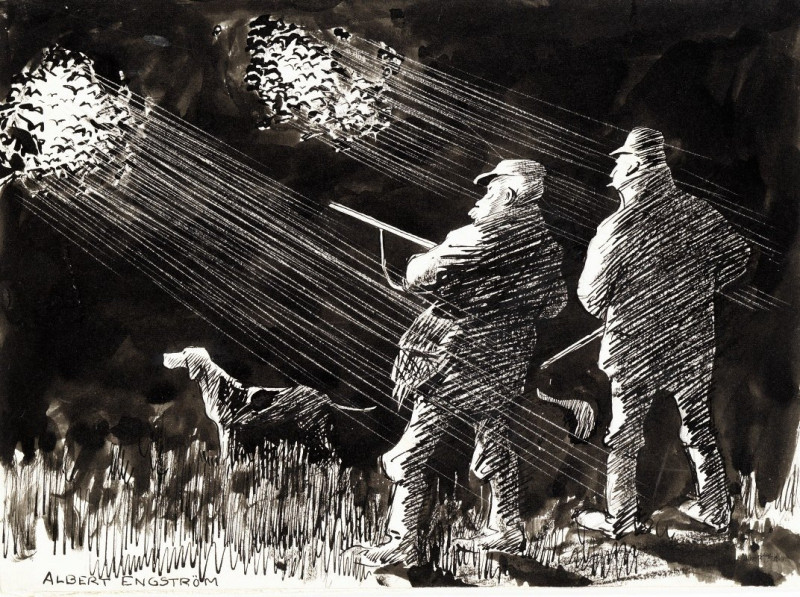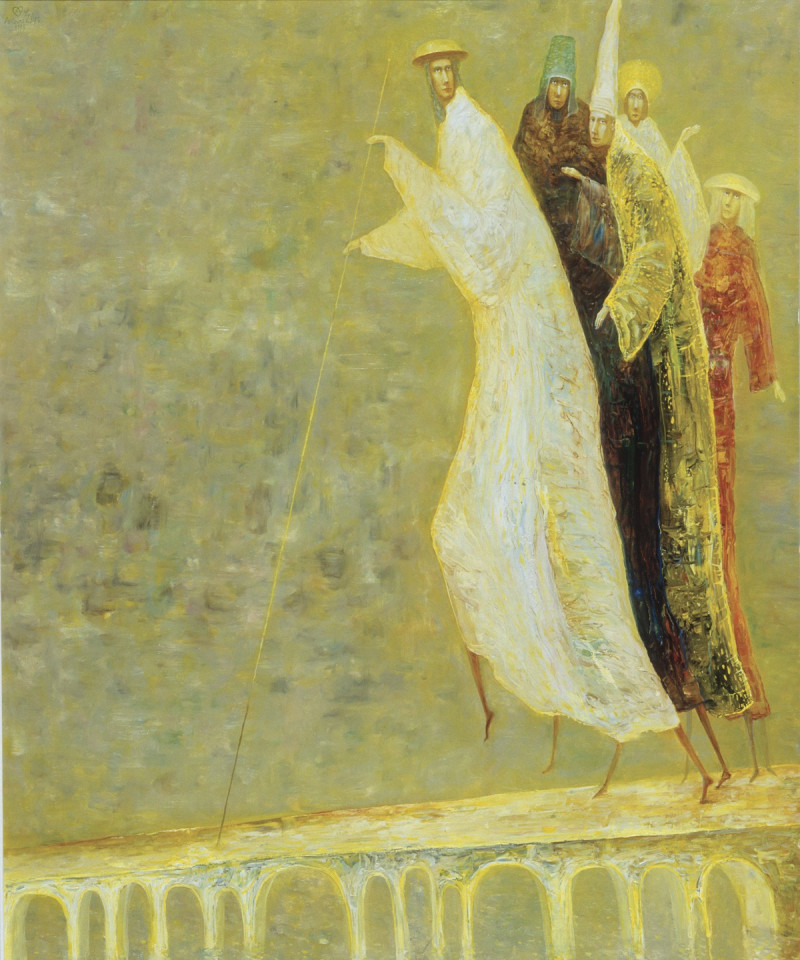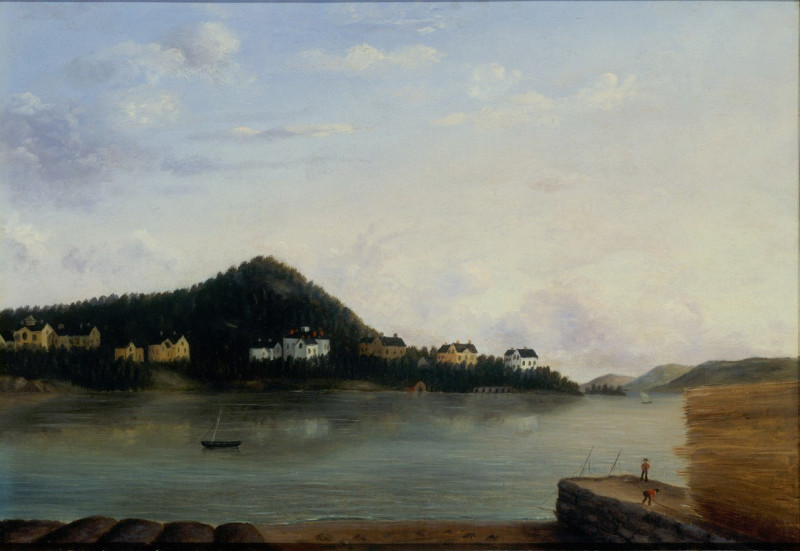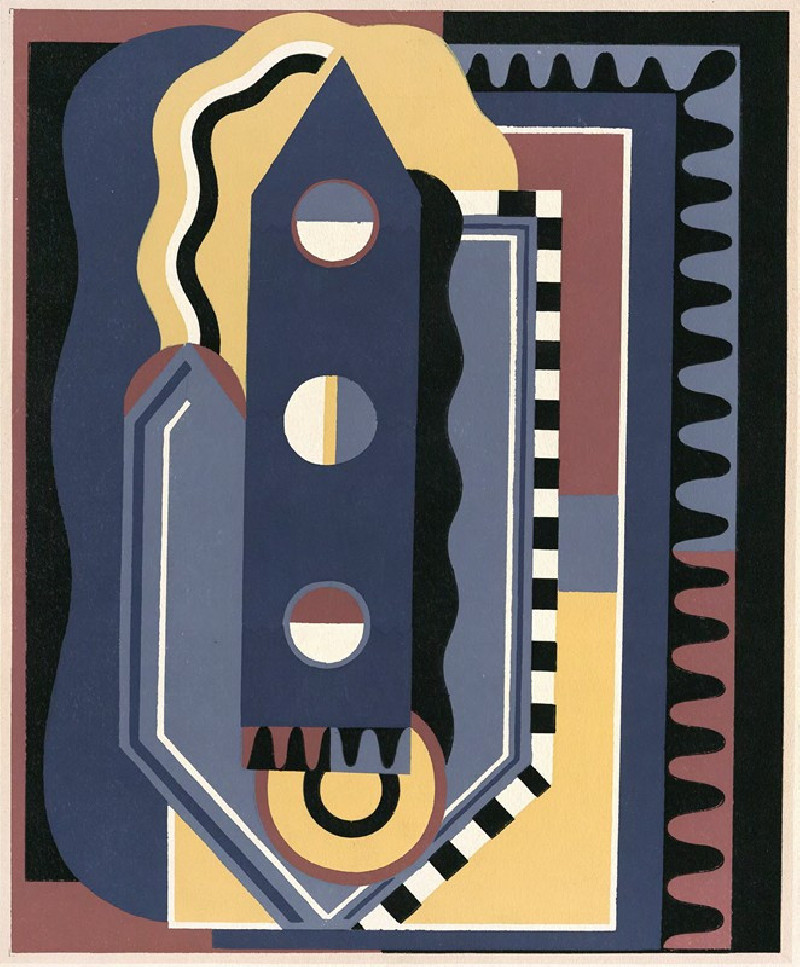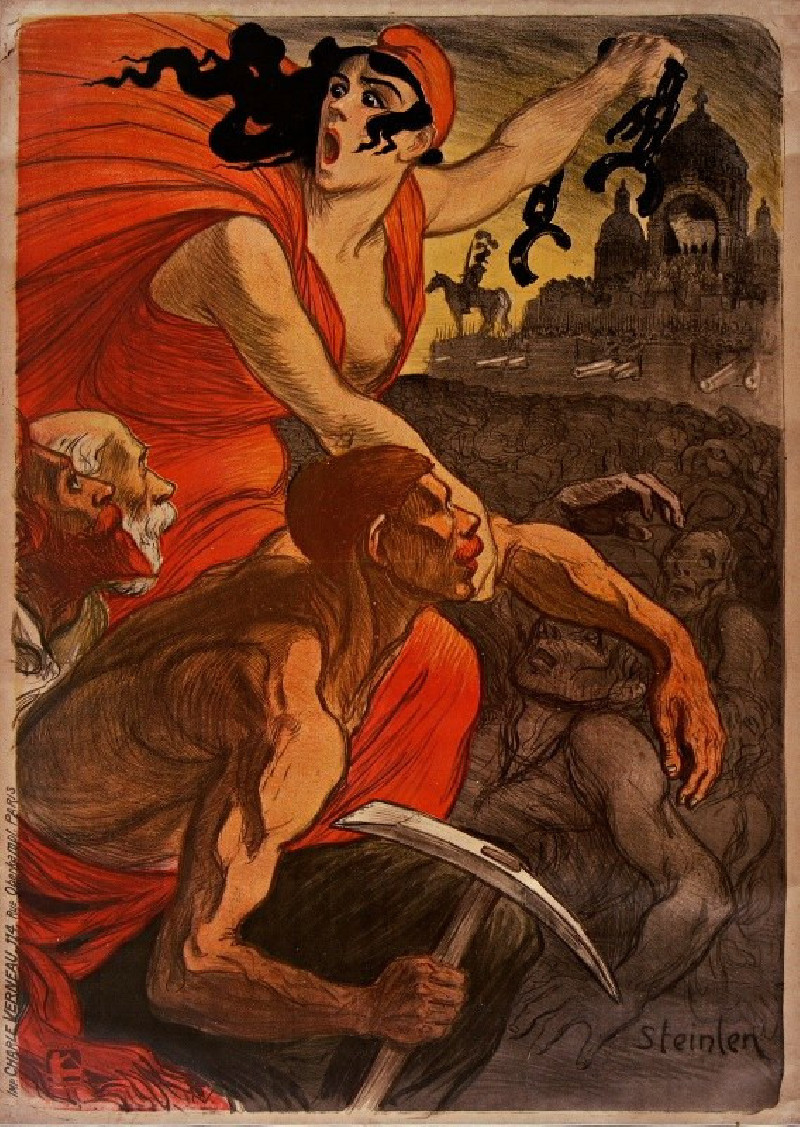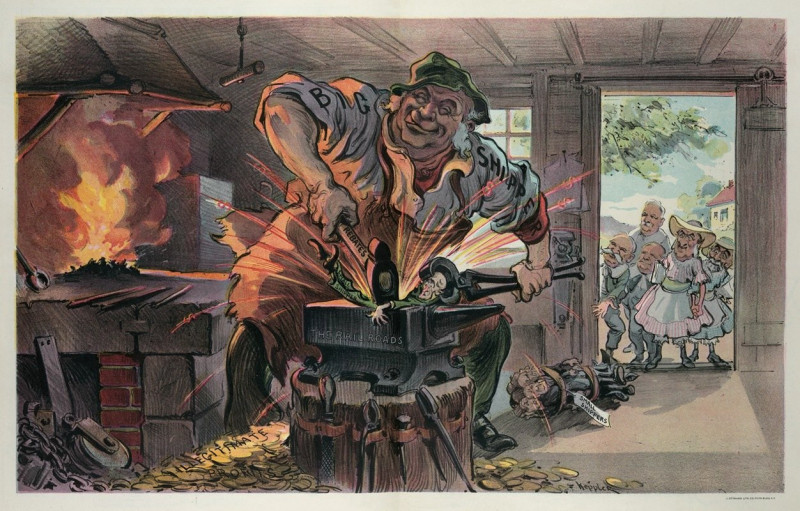Hockeyspieler (1934)
Technique: Giclée quality print
Recommended by our customers
More about this artwork
Ernst Ludwig Kirchner, a towering figure of the German Expressionist movement, presents an exhilarating scene in his 1934 watercolor and ink work entitled "Hockeyspieler" (Hockey Players). This vibrant piece captures the movement and intensity of a hockey game, showcasing Kirchner's unique ability to convey emotion and dynamism through abstract forms.The painting displays three hockey players engaged in a vigorous match. The swirls of color and rapid, sketch-like strokes evoke a sense of swift motion, mirroring the fast-paced nature of the sport. The central figure, clad in orange, seems to be in motion towards the puck, while the figures in black and blue appear to engage with each other, adding a competitive edge to the scene.Kirchner's use of a simple color palette enriched by the bold outlines emphasizes the action, making the figures almost leap off the page. The background, an ethereal wash of green, contrasts subtly with the intensity of the figures, highlighting their movements and creating a sense of depth in the composition."Hockeyspieler" is not merely a representation of a sports event; it is a profound commentary on the nature of human interaction and the complexity of emotions. This painting, like much of Kirchner's work, explores the boundaries of expression and the potential of color and form to depict more than just the visual, seeping into the psychological.
Delivery
Returns
Ernst Ludwig Kirchner (1880–1938) was one of the most important German Expressionist painters. He was a co-founder of Die Brücke, a group of German expressionist artists formed in Dresden in 1905. Die Brücke and Kirchner took inspiration from Vincent Van Gogh and Edvard Munch, as well as African and Oceanic art. They used woodblock printing as a medium to showcase their signature style: flat, unrealistic images with vivid colors. The recurring themes in Kirchner's artworks included exotic cultures, faraway landscapes, self-portraits, dancers and Berlin street life. His paintings and prints effectively portrayed non-European cultures despite the fact that he never traveled outside of Europe.

